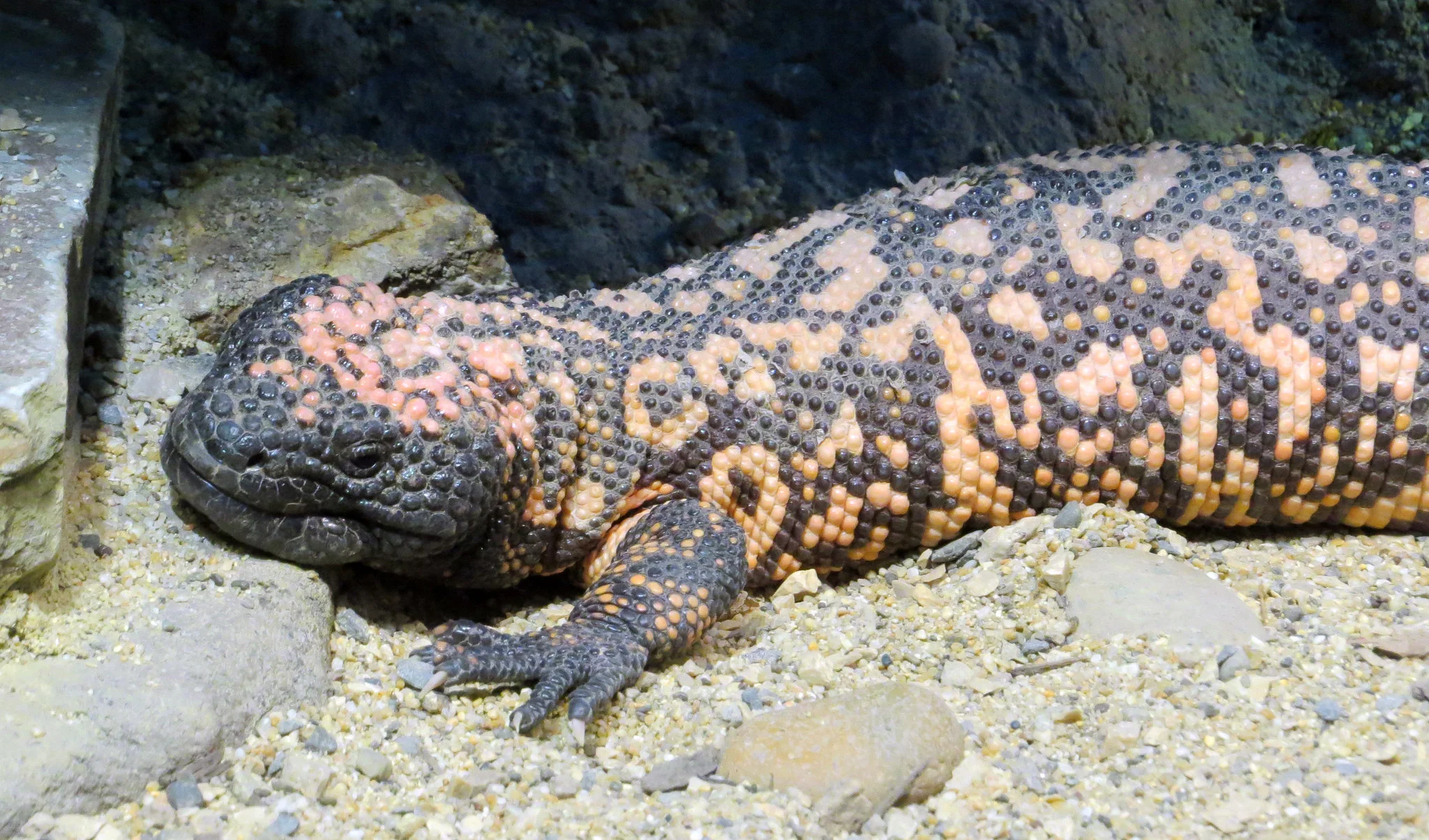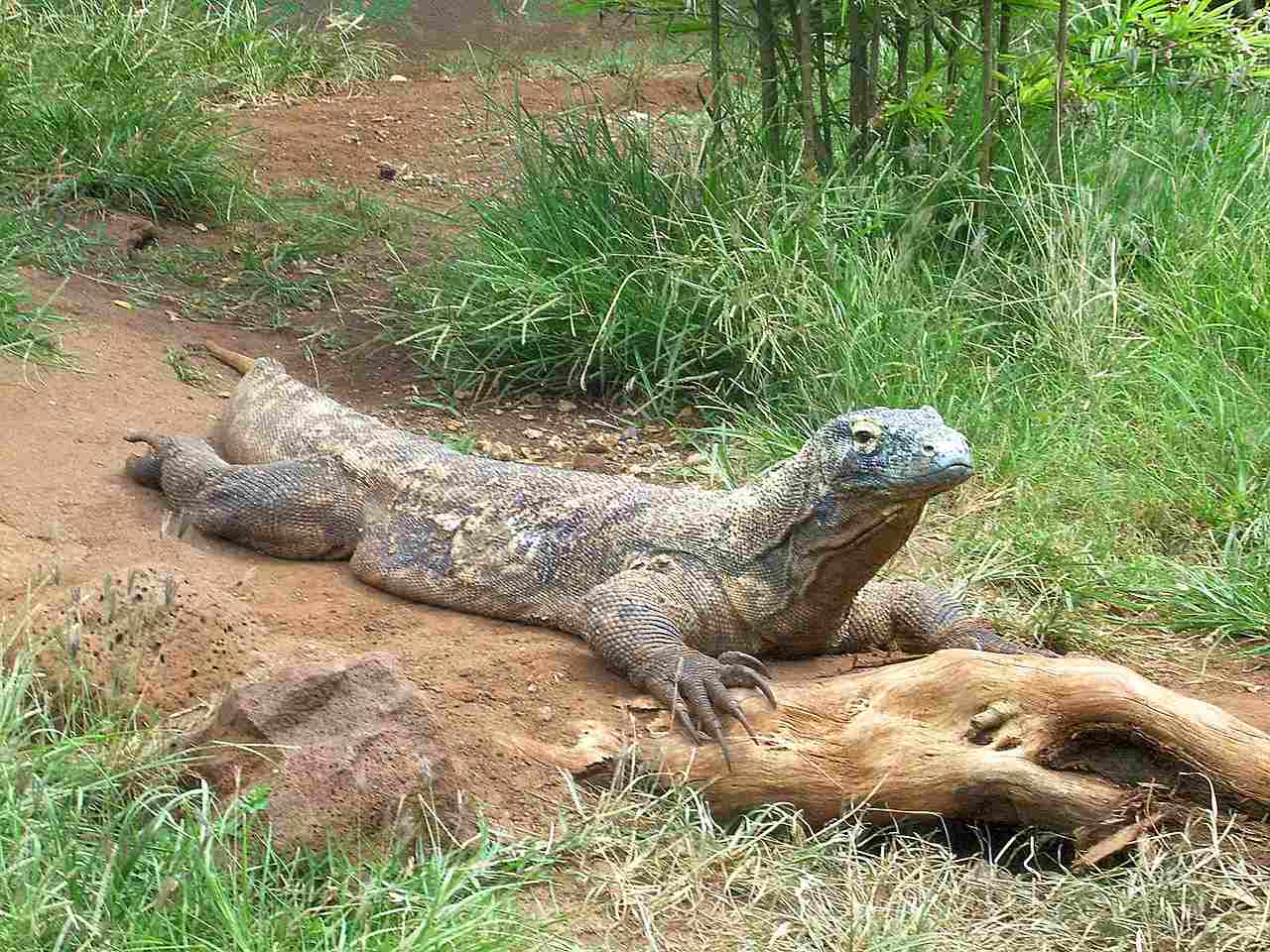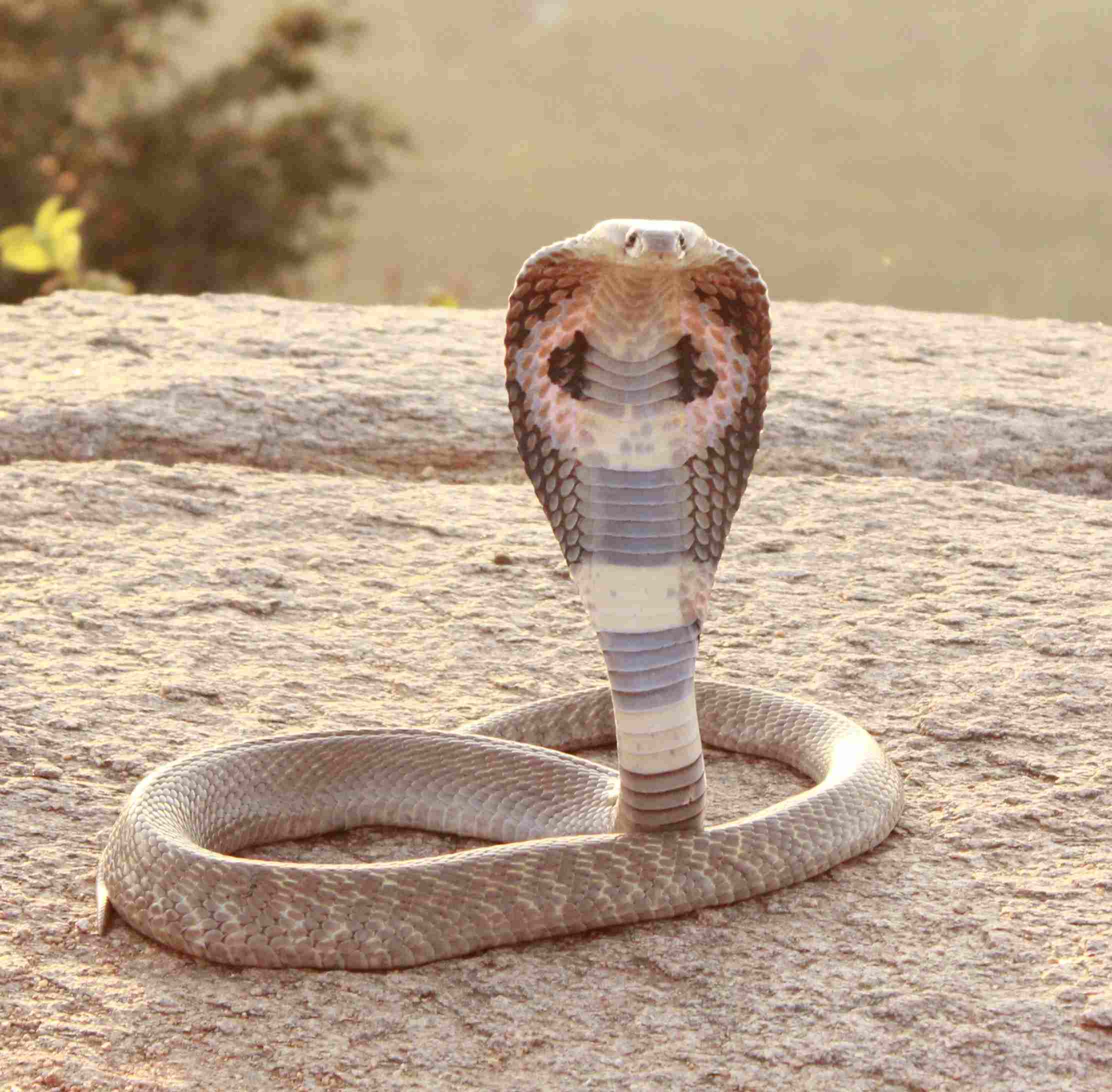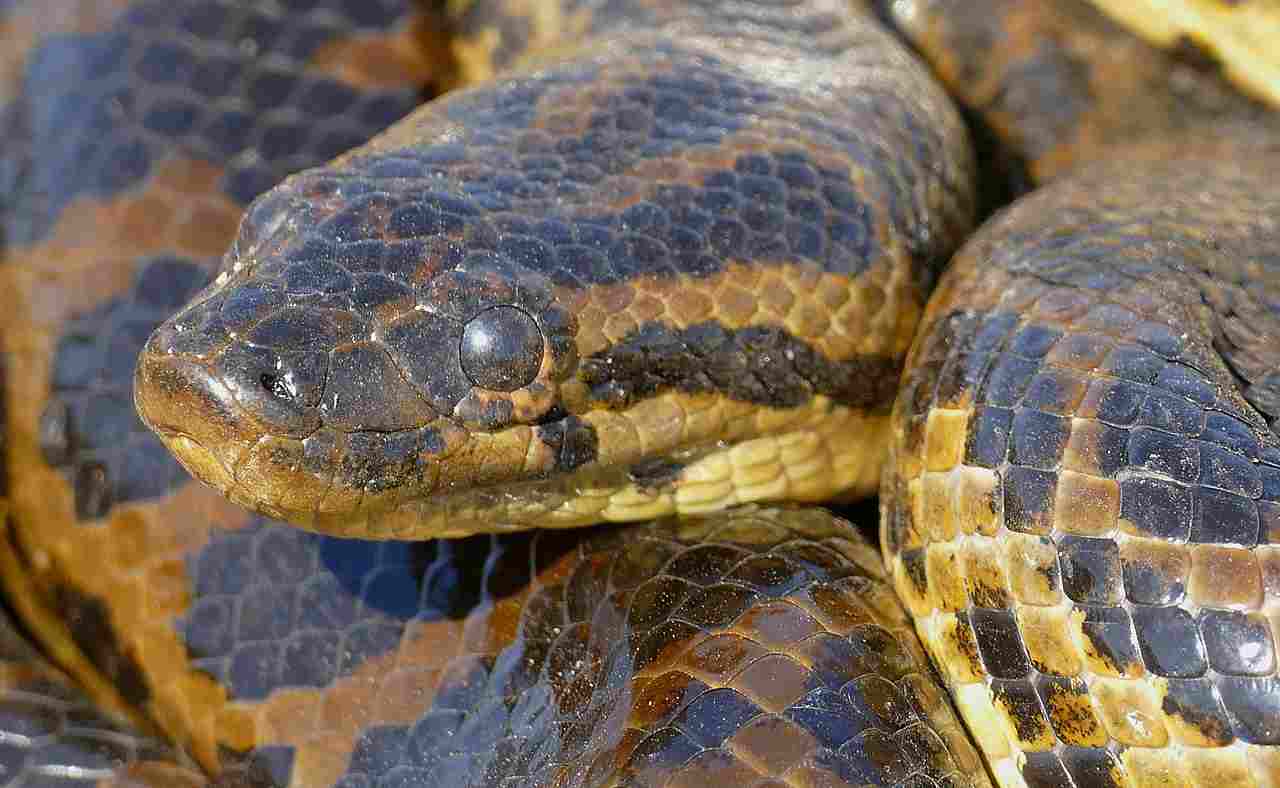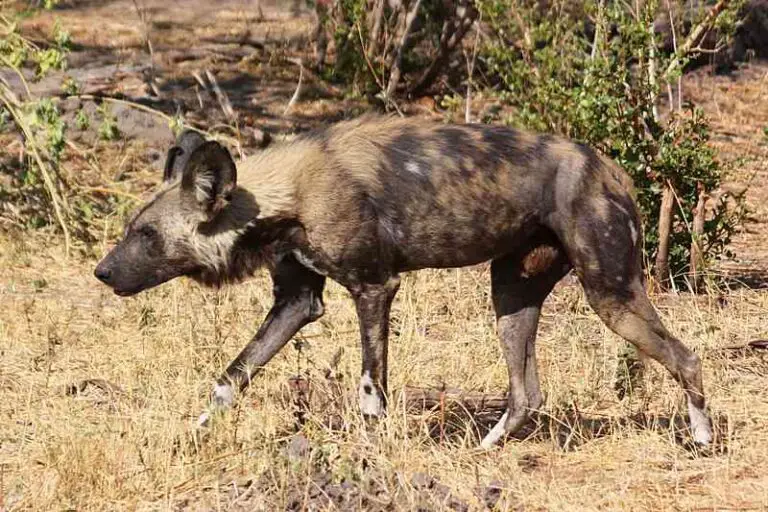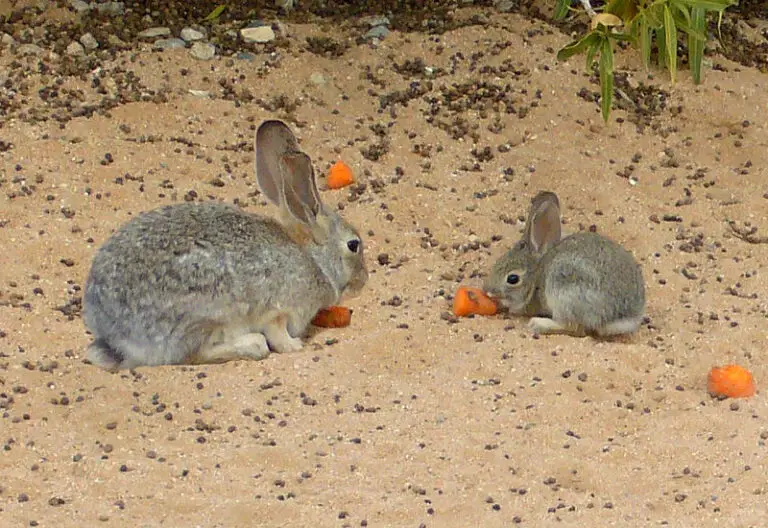Komodo Dragon Vs Lion Who Would Win, Overall Comparison
Drawing a comparison between the Komodo dragon and the lion unveils distinct differences in their characteristics as formidable predators. While both are apex predators in their respective habitats, the lion holds a considerable advantage in a direct confrontation. The lion’s larger size, greater weight, superior speed, agility, intelligence, and predatory instincts, coupled with its arsenal of weaponry, position it as the likely victor in a real-life encounter with the Komodo dragon.
I. Komodo Dragon vs Lion: An Overview of Apex Predators:
– The Komodo dragon and lion stand as apex predators, each adapted to dominate its specific ecosystem. However, a closer examination reveals key differences that influence their effectiveness as predators.
II. Lion’s Predatory Advantages:
– Lions possess a set of characteristics that give them a significant advantage in a confrontation with a Komodo dragon. Their larger size, greater weight, superior speed, agility, intelligence, and arsenal of predatory instincts collectively contribute to their effectiveness as apex predators.
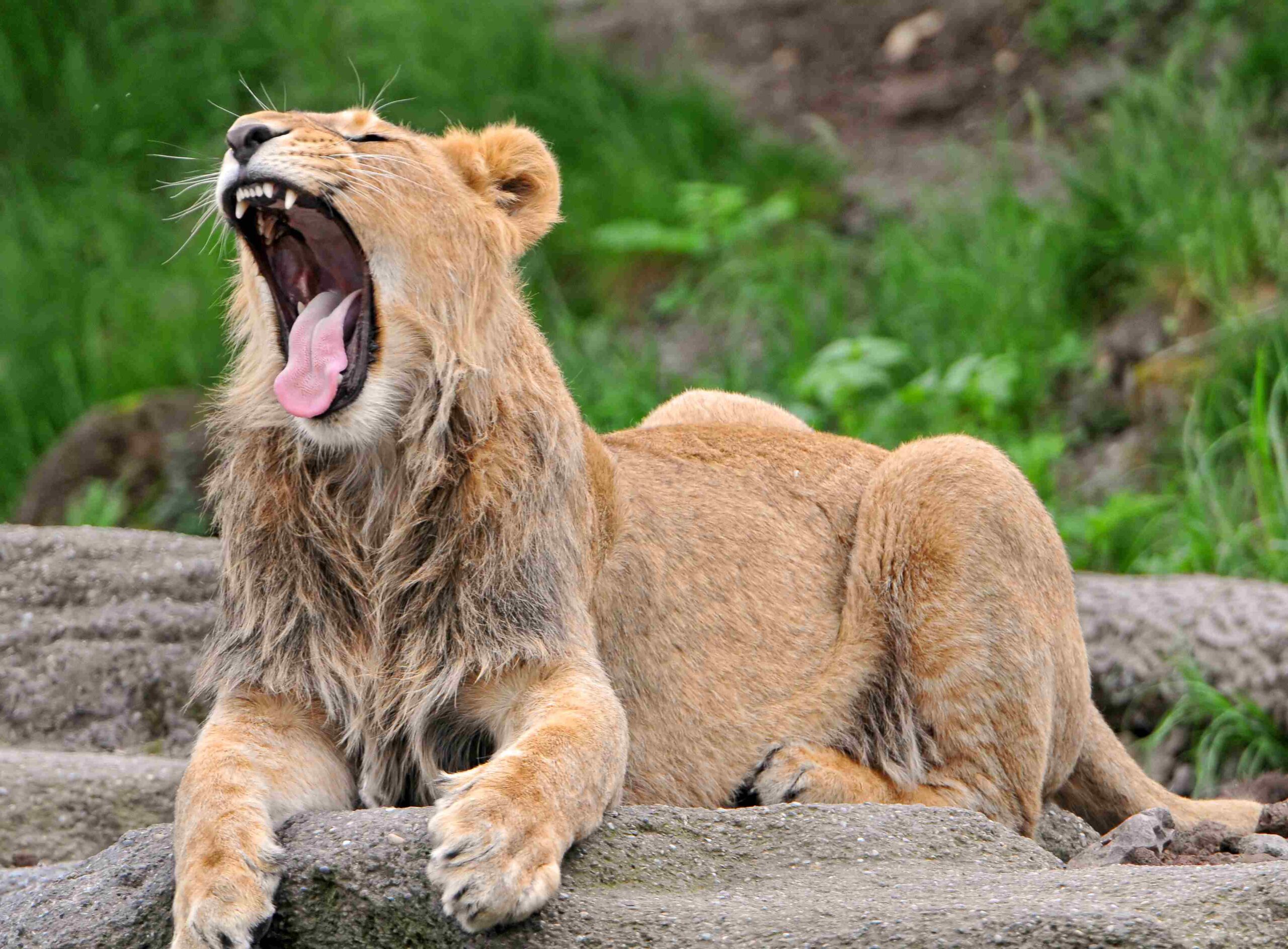
III. Size and Weight:
– Lions, being larger and heavier, hold a physical advantage over Komodo dragons. This size discrepancy contributes to the lion’s prowess in overpowering and subduing prey.
IV. Speed and Agility:
– Lions exhibit superior speed and agility compared to Komodo dragons. These traits enable them to pursue, catch, and outmaneuver prey efficiently, showcasing their adaptability in various hunting scenarios.
V. Intelligence and Predatory Instincts:
– Lions display higher levels of intelligence and sophisticated predatory instincts. Their ability to strategize, work cooperatively in groups, and employ hunting tactics enhances their effectiveness as apex predators.
VI. Arsenal of Weaponry:
– Lions possess a formidable arsenal of predatory weaponry, including sharp claws, powerful jaws, and a robust physique. These attributes contribute to their success as skilled hunters capable of taking down larger prey.
VII. Real-life Predator Superiority:
– In a real-life encounter between a Komodo dragon and a lion, the lion’s combination of size, speed, agility, intelligence, and predatory instincts positions it as the likely victor. The lion’s prowess as an apex predator is further emphasized by its ability to efficiently navigate its environment and overpower potential adversaries.
VIII. Conservation Significance:
– Recognizing the unique attributes and predatory strategies of both Komodo dragons and lions is crucial for conservation efforts. Tailoring conservation strategies to protect these apex predators contributes to the preservation of biodiversity and ecosystem balance in their respective habitats.
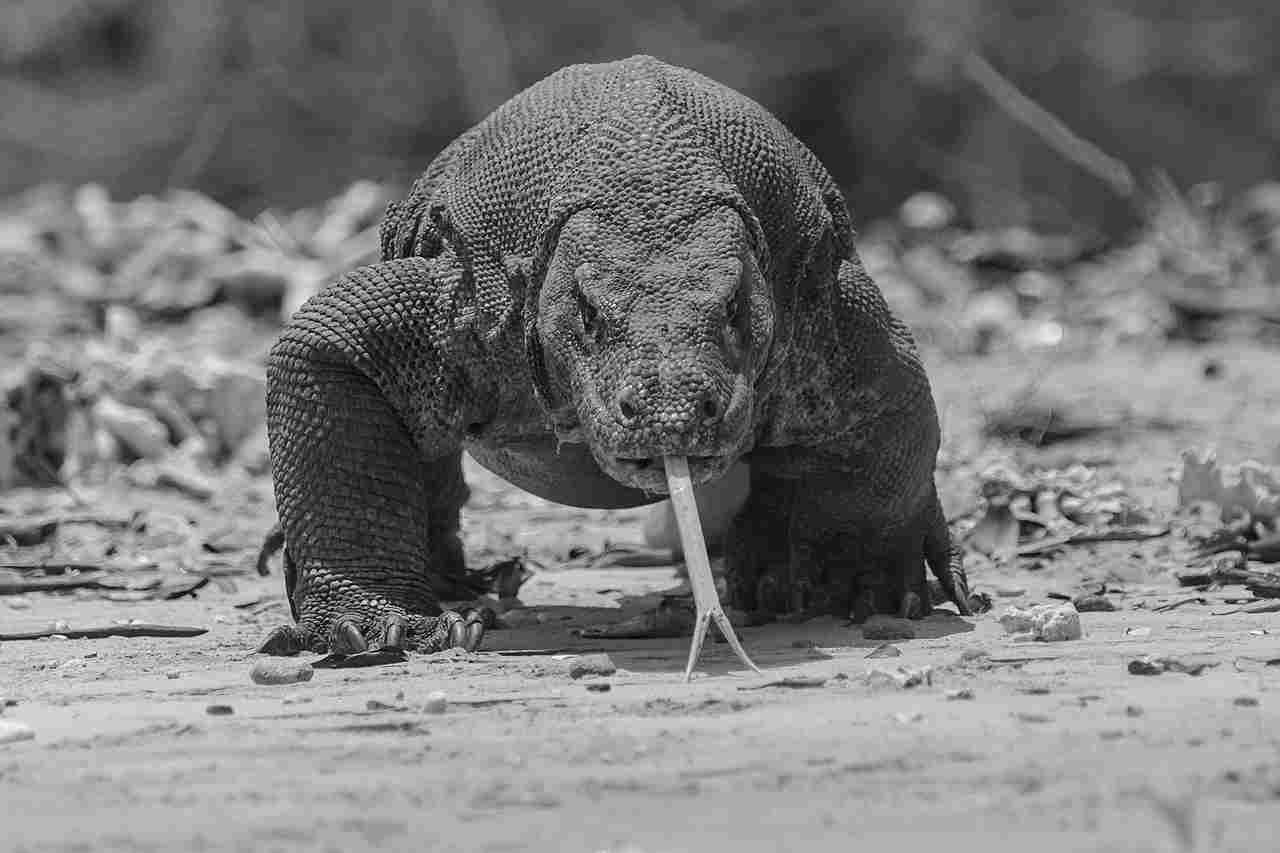
*Details of Comparison
| Criteria | Komodo Dragon | Lion |
| Taxonomy | Reptilia, Varanidae, Varanus komodoensis |
Mammalia, Felidae, Panthera leo
|
| Appearance | Armored scales, rugged texture |
Short fur, tawny color, males with distinctive manes
|
| Size | Up to 10 feet (males), 7.5 feet (females) |
8.5 to 10.8 feet (males), 7.5 to 9 feet (females)
|
| Weight | 150-200 pounds (males), 150 pounds (females) |
330-500 pounds (males), 265-395 pounds (females)
|
| Bite Force (PSI) | 600-700 PSI | ~650 PSI |
| Physical Offensive Advantages | Venomous bite, sharp teeth |
Powerful claws, sharp teeth, speed
|
| Physical Defensive Advantages | Armored scales, agility |
Group living, agility
|
| Speed | ~20 km/h | Up to 50 km/h |
| Agility | Agile on land and in water |
Remarkable agility, especially during pursuits
|
| Senses | Excellent sense of smell, keen eyesight |
Sharp eyesight, acute sense of hearing
|
| Overall Physical Capacity | Robust build, powerful limbs |
Versatile with speed, strength, and endurance
|
| Habitat Preference(s) and Geographic Region | Indonesian islands, savannas, forests, coastal regions |
Grasslands, savannas, open woodlands in Africa, Gir Forest in India
|
| Tracks | Clawed tracks near water |
Paw prints with distinctive toe prints and claw marks
|
| Lifespan | Up to 20 years | 10-14 years |
| Mode of Feeding | Carnivorous, venomous bite |
Carnivorous, cooperative hunting
|
| Intelligence | Problem-solving abilities |
Complex social structures, cooperative hunting
|
| Social Behavior | Generally solitary, aggressive territorial behavior |
Highly social, cooperative hunting, complex hierarchy
|
| Mode of Reproduction | Oviparous, limited parental care |
Viviparous, cooperative parental care
|
| Parental Behavior | Limited parental care, nest guarding |
Cooperative parental care within the pride
|
| Proximity to Human-Inhabited Areas | Remote Indonesian islands |
Historical and current presence near human settlements
|
| Behavior Toward Humans | Generally avoidant, aggressive if threatened |
Generally avoid direct confrontation, rare attacks
|
| Danger Posed to Humans | Can be dangerous under certain conditions |
Can be dangerous under certain conditions
|
| Associated Precautions | Caution urged when in close proximity, maintaining a safe distance recommended |
Observing wildlife from a safe distance in their natural habitat recommended
|
| Conservation Status | Vulnerable on the IUCN Red List |
Vulnerable on the IUCN Red List
|
1. Taxonomy
Komodo Dragon:
Kingdom: Animalia
Phylum: Chordata
Class: Reptilia
Order: Squamata
Family: Varanidae
Genus: Varanus
Species: V. komodoensis
Lion:
Kingdom: Animalia
Phylum: Chordata
Class: Mammalia
Order: Carnivora
Family: Felidae
Genus: Panthera
Species: P. leo
2. Appearance
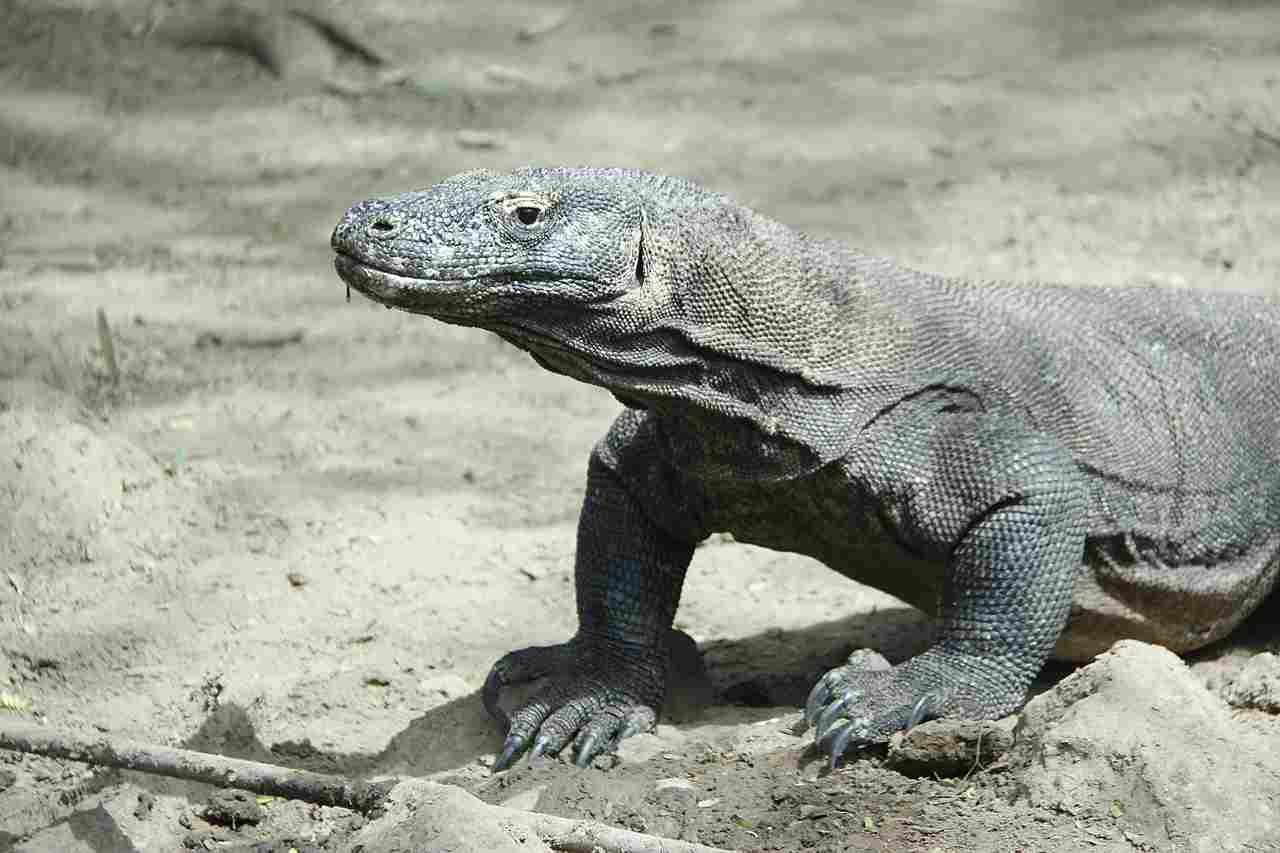
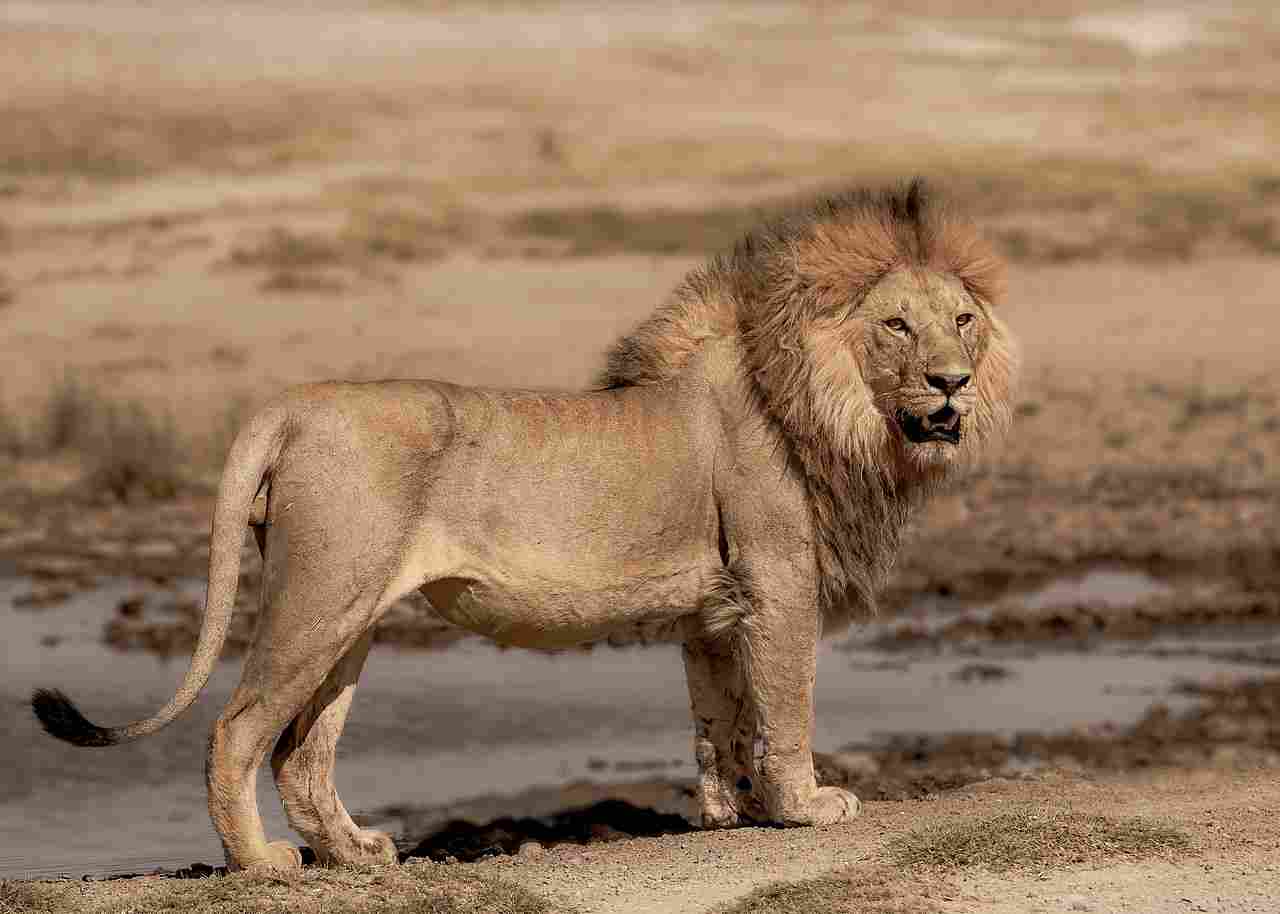
Komodo Dragon:
Scales covering the body, often gray or brown with a rugged texture.
Long, muscular tail and sturdy limbs.
Females are generally smaller than males.
Lion:
Covered in short fur, typically a tawny color with a lighter underside.
Males exhibit a distinctive mane, which varies in color and size.
Robust body with powerful legs.
Comparison:
Komodo dragons have an armored appearance, while lions possess a more streamlined, feline look.
Ecological Implications:
Komodo dragons’ scales provide protection in their harsh, arid habitats, while a lion’s fur aids in camouflage within grassy savannas.
3. Size
Komodo Dragon:
Adult males can reach lengths of up to 10 feet (3 meters).
Females are generally smaller, around 7.5 feet (2.3 meters) in length.
Lion:
Adult males have a length, including the tail, of around 8.5 to 10.8 feet (2.6 to 3.3 meters).
Females are smaller, with a length of approximately 7.5 to 9 feet (2.3 to 2.7 meters).
Comparison:
Komodo dragons are longer than female lions but slightly shorter than male lions.
Ecological Implications:
Size influences their roles in the ecosystem; lions’ strength in group hunting, and Komodo dragons’ solitary predatory behavior.
4. Weight
Komodo Dragon:
Adult males weigh between 150 to 200 pounds (68 to 91 kilograms).
Females generally weigh around 150 pounds (68 kilograms).
Lion:
Adult males weigh between 330 to 500 pounds (150 to 227 kilograms).
Adult females weigh approximately 265 to 395 pounds (120 to 179 kilograms).
Comparison:
Lions, both males and females, are significantly heavier than Komodo dragons.
Ecological Implications:
Weight affects their predatory strategies and roles within the ecosystem, influencing prey selection and hunting techniques.
5. Bite Force (PSI – Pounds per Square Inch)
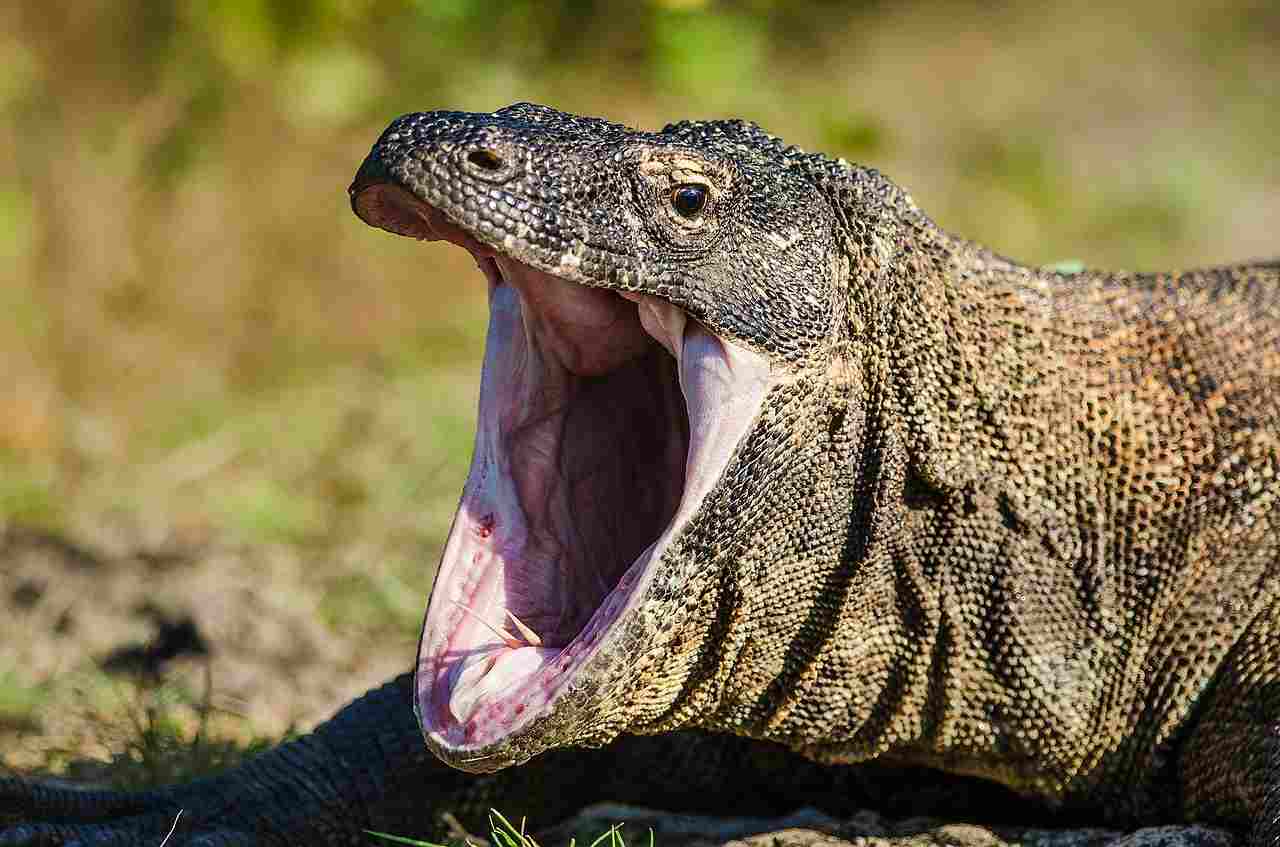

Komodo Dragon:
Estimated bite force ranges from 600 to 700 PSI.
Lion:
Estimated bite force is around 650 PSI.
Comparison:
Similar bite forces, indicating powerful jaws in both species.
Ecological Implications:
Bite force relates to their hunting techniques and prey capture, with lions relying on it for suffocating prey and Komodo dragons for disabling and eventually killing larger animals.
6. Physical Offensive Advantages
Komodo Dragon:
Venomous bite delivers toxins that cause prey to weaken and die over time.
Sharp, serrated teeth aid in tearing flesh.
Lion:
Powerful claws and sharp teeth for gripping and tearing.
Exceptional speed and agility during a charge.
Comparison:
Both species possess effective physical tools for offensive strategies in hunting.
Ecological Implications:
These offensive adaptations contribute to their roles as top predators, influencing prey selection and hunting techniques.
7. Physical Defensive Advantages
Komodo Dragon:
Tough, armored scales provide protection against bites from other predators.
Agile movements and quick reflexes aid in evasion.
Lion:
Group living provides collective defense against potential threats.
Quick reflexes and agility aid in avoiding danger.
Comparison:
Komodo dragons rely more on individual defensive capabilities, while lions benefit from group defense.
Ecological Implications:
Defensive strategies contribute to their survival in diverse environments, influencing interactions with other species.
8. Speed (Km/hour or Mile/hour)
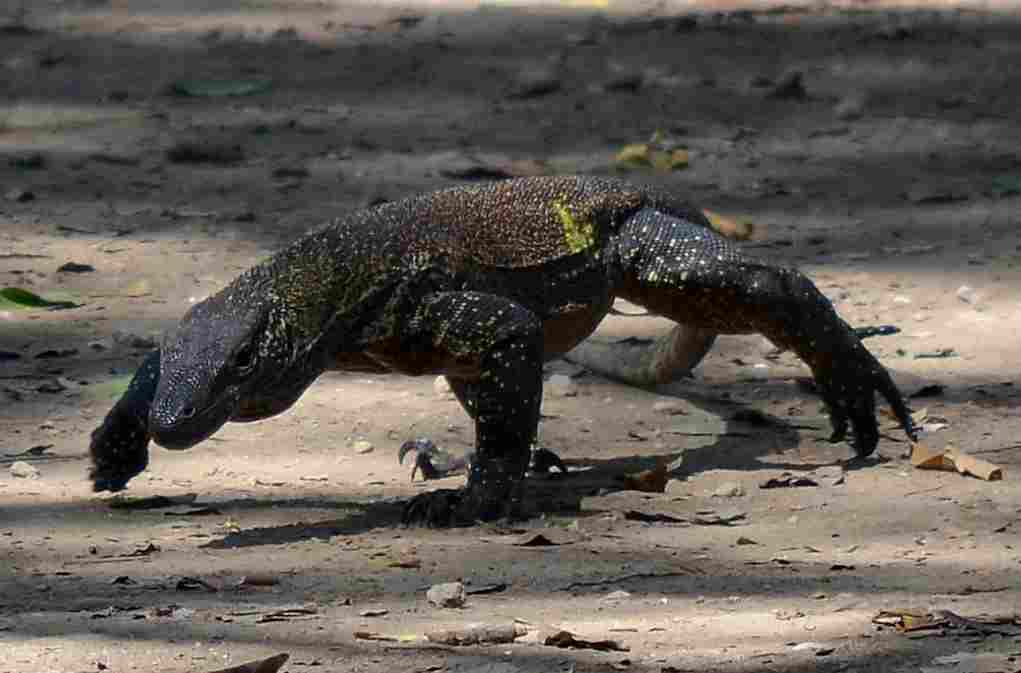
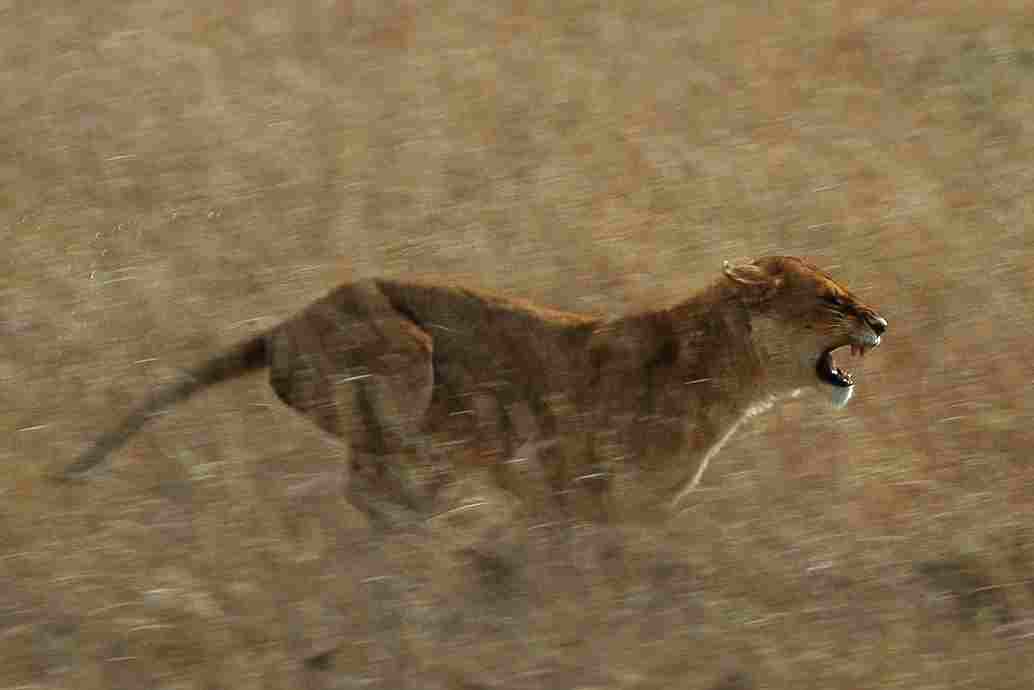
Komodo Dragon:
Can reach speeds of around 20 km/h (12 mph) in short bursts.
Lion:
Capable of running at speeds up to 50 km/h (31 mph).
Comparison:
Lions demonstrate significantly higher speed than Komodo dragons.
Ecological Implications:
Speed is crucial for catching prey and evading predators; lions’ higher speed contributes to their success in group hunting.
9. Agility
Komodo Dragon:
Agile on land and in the water, utilizing their long tail for balance.
Lion:
Remarkable agility, especially during pursuits and attacks.
Comparison:
Lions exhibit superior agility, aiding in their coordinated group hunting.
Ecological Implications:
Agility influences hunting success and overall adaptability to diverse landscapes; lions’ agility is an asset during collaborative hunting strategies.
10. Senses
Komodo Dragon:
Excellent sense of smell to locate prey over long distances.
Keen eyesight for detecting movement.
Lion:
Sharp eyesight for spotting prey during daylight.
Acute sense of hearing for detecting distant sounds.
Comparison:
Both species rely on a combination of senses for hunting and survival.
Ecological Implications:
Sensory adaptations contribute to their roles as apex predators, enhancing their ability to locate and capture prey efficiently.
11. Overall Physical Capacity
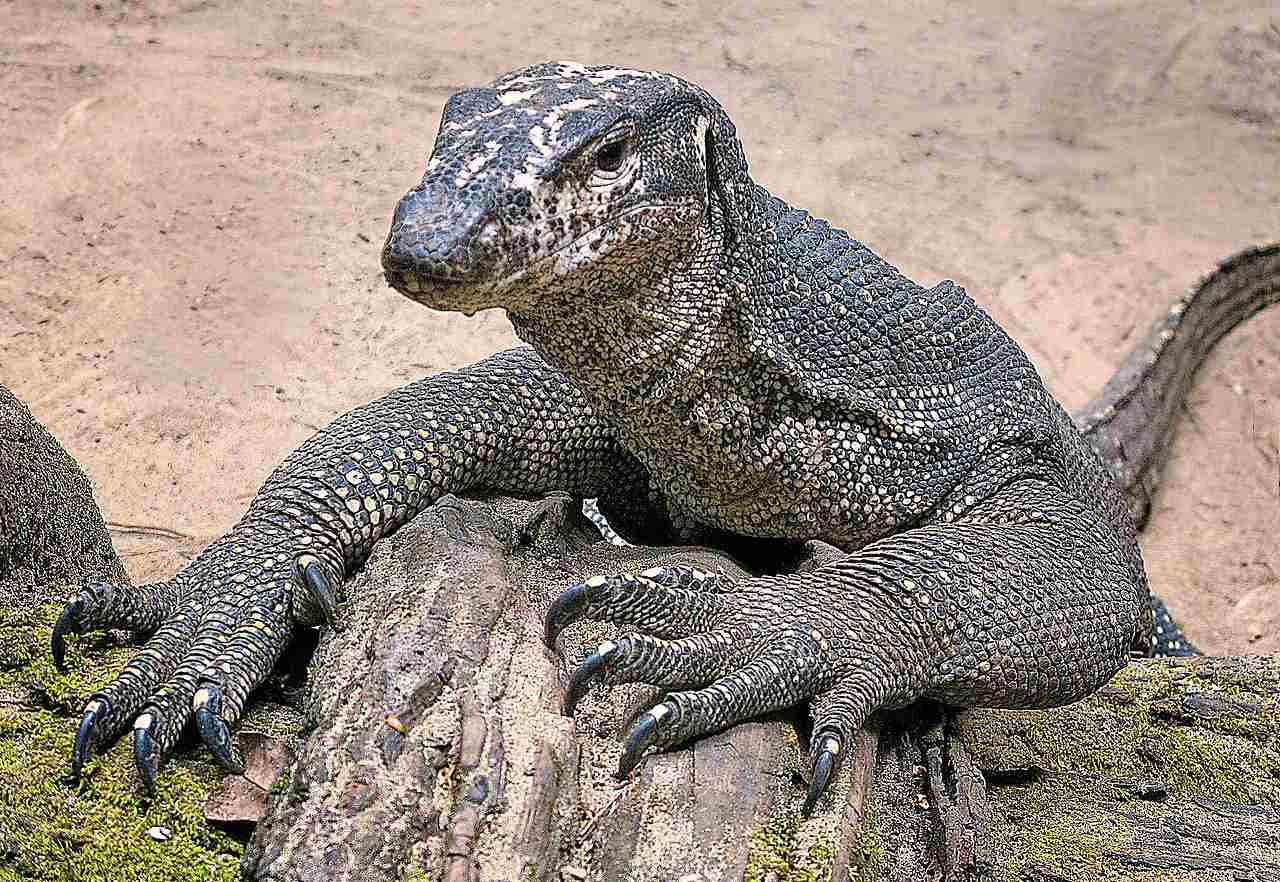
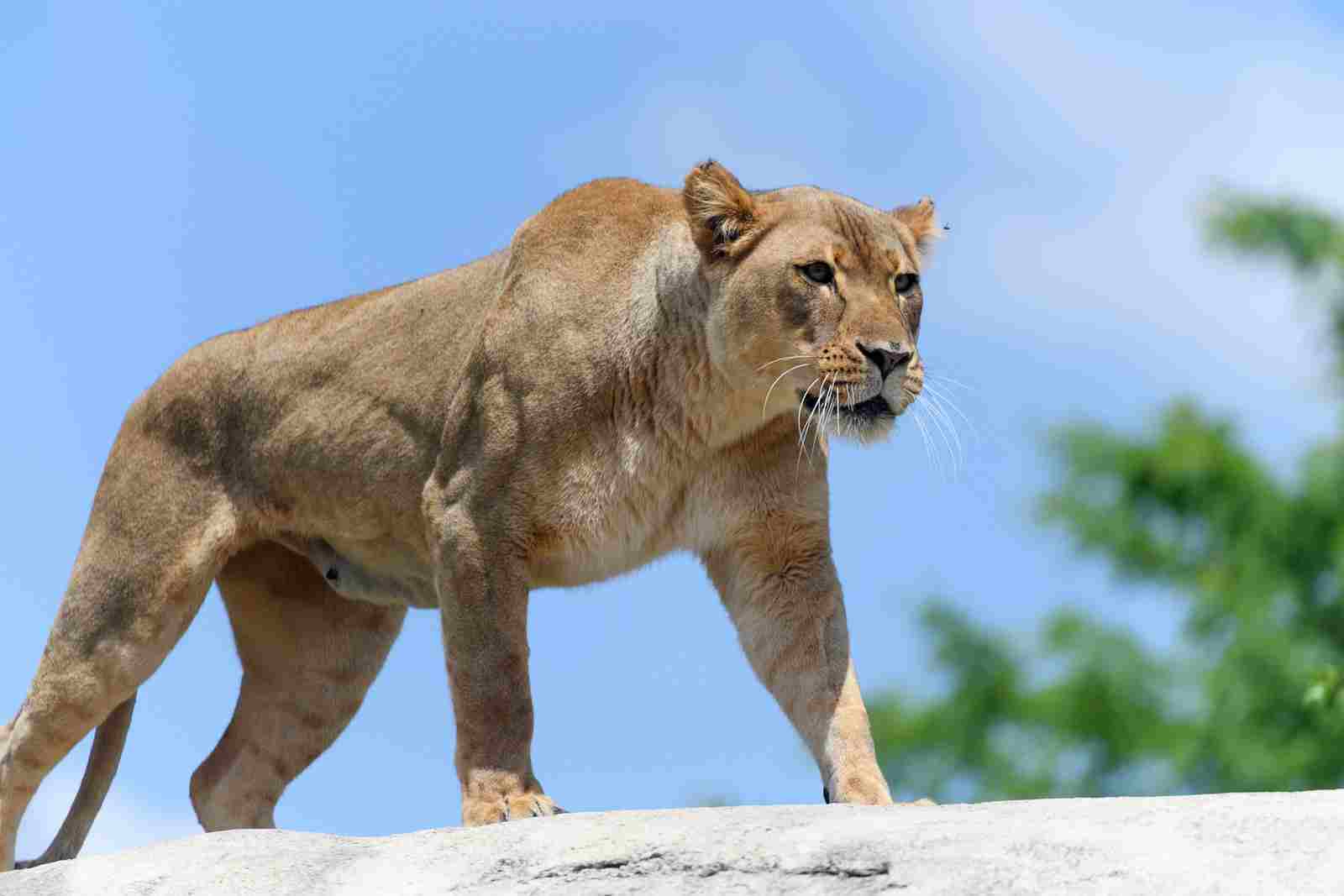
Komodo Dragon:
Robust build and powerful limbs for ambushing and overpowering prey.
Lion:
Well-adapted for endurance during chases and powerful attacks.
Comparison:
Lions possess a more versatile physical capacity, combining speed, strength, and endurance.
Ecological Implications:
Physical capacity influences their hunting strategies and success in different ecological niches.
12. Habitat Preference(s) and Geographic Region
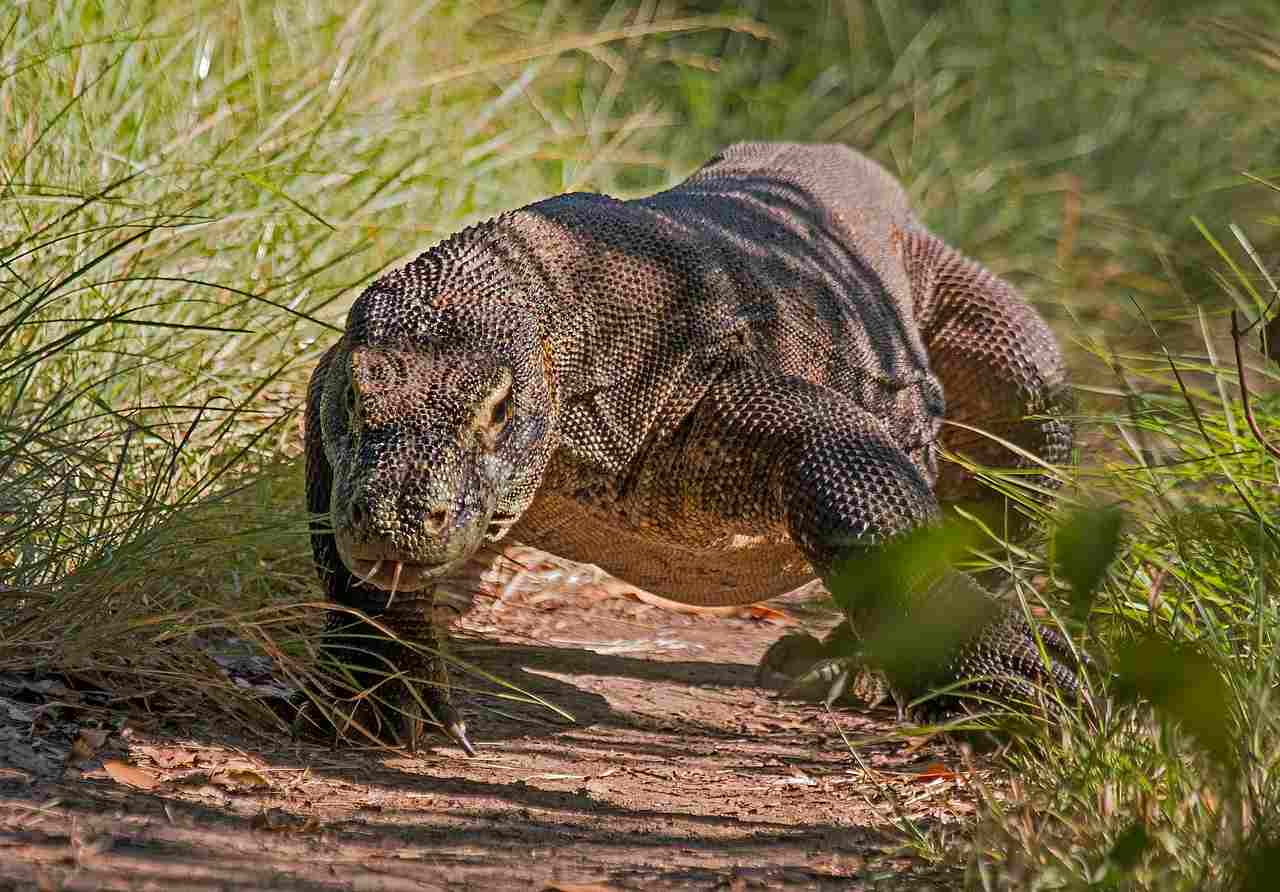
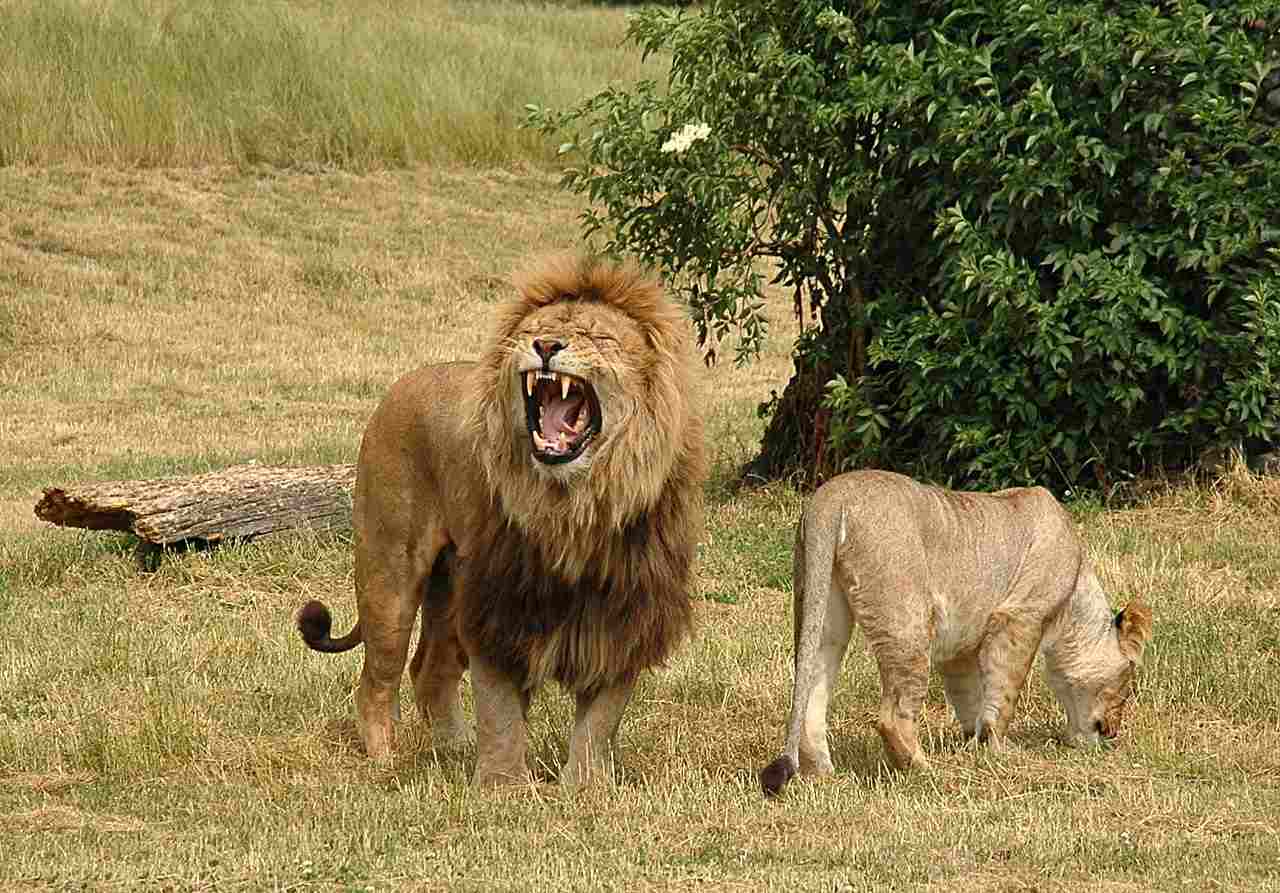
Komodo Dragon:
Indigenous to the Indonesian islands of Komodo, Rinca, Flores, and Gili Motang.
Thrive in savannas, forests, and coastal regions.
Lion:
Inhabit various habitats including grasslands, savannas, and open woodlands.
Widely distributed in Africa with a small population in the Gir Forest of India.
Comparison:
While both species prefer different regions, there is some overlap in grassy and savanna environments.
Ecological Implications:
Habitat preferences impact their interactions with other species and overall ecosystem dynamics.
13. Tracks
Komodo Dragon:
Clawed tracks with distinct patterns, often observed near water sources.
Lion:
Paw prints with distinctive toe prints and claw marks, characteristic of felids.
Comparison:
Tracks serve as indicators of their presence and movements in the ecosystem.
Ecological Implications:
Tracking behavior is crucial for understanding their territorial range and interactions within their respective habitats.
14. Lifespan
Komodo Dragon:
Typically live up to 20 years in the wild.
Lion:
Average lifespan ranges from 10 to 14 years in the wild.
Comparison:
Komodo dragons generally have a longer lifespan than lions.
Ecological Implications:
Lifespan influences their roles in the ecosystem, impacting factors such as population dynamics and interactions with other species.
15. Mode of Feeding
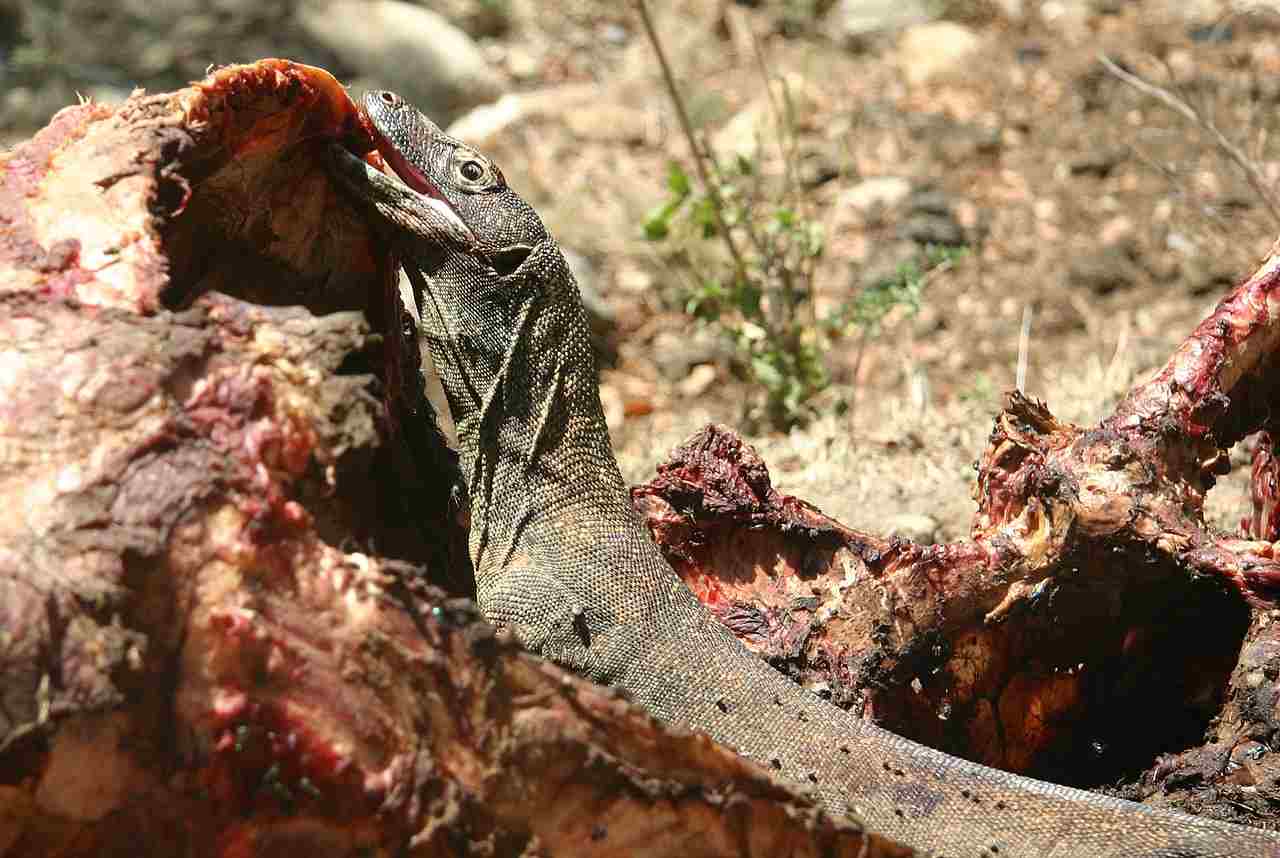
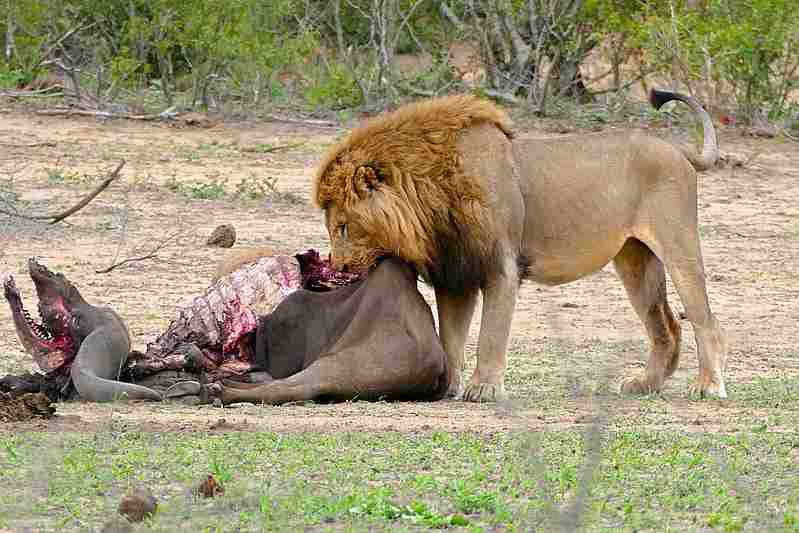
Komodo Dragon:
Carnivorous, primarily feeding on mammals, birds, and occasionally carrion.
Use a combination of venomous bite and physical strength to subdue prey.
Lion:
Carnivorous, primarily hunting ungulates such as wildebeest and zebras.
Exhibit cooperative hunting strategies, with the pride working together to bring down larger prey.
Comparison:
Both are apex predators but employ different hunting techniques.
Ecological Implications:
Feeding behavior influences prey population dynamics and ecosystem balance.
16. Intelligence
Komodo Dragon:
Display problem-solving abilities and can coordinate group hunting.
Lion:
Exhibit complex social structures and cooperative hunting strategies, showcasing high intelligence.
Comparison:
Lions demonstrate higher social intelligence, while Komodo dragons showcase individual problem-solving skills.
Ecological Implications:
Intelligence influences their ability to adapt to environmental changes and interact with other species.
17. Social Behavior
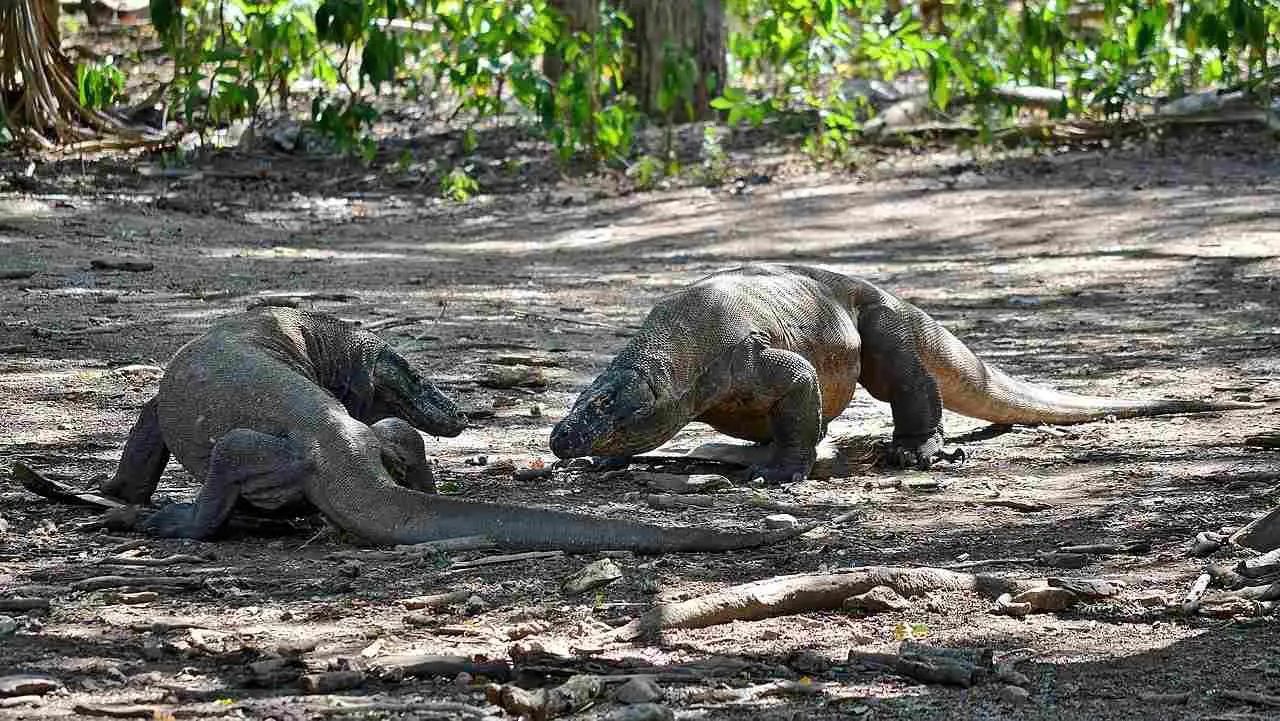

Komodo Dragon:
Generally solitary, except during mating or feeding on a large carcass.
Aggressive territorial behavior towards conspecifics.
Lion:
Highly social, living in prides with complex hierarchical structures.
Cooperative hunting and communal care of offspring.
Comparison:
Lions exhibit intricate social structures, while Komodo dragons are predominantly solitary.
Ecological Implications:
Social behavior impacts their roles in maintaining ecosystem balance and contributes to their respective ecological niches.
18. Mode of Reproduction
Komodo Dragon:
Oviparous, females lay eggs in nests, and young Komodo dragons hatch independently.
No parental care beyond nest guarding.
Lion:
Viviparous, giving birth to live cubs after a gestation period of about 110 days.
Cubs are cared for within the pride, and females collaborate in raising them.
Comparison:
Komodo dragons follow a more independent reproductive strategy, while lions exhibit cooperative parental care.
Ecological Implications:
Reproductive strategies impact population dynamics and the distribution of these species within their ecosystems.
19. Parental Behavior
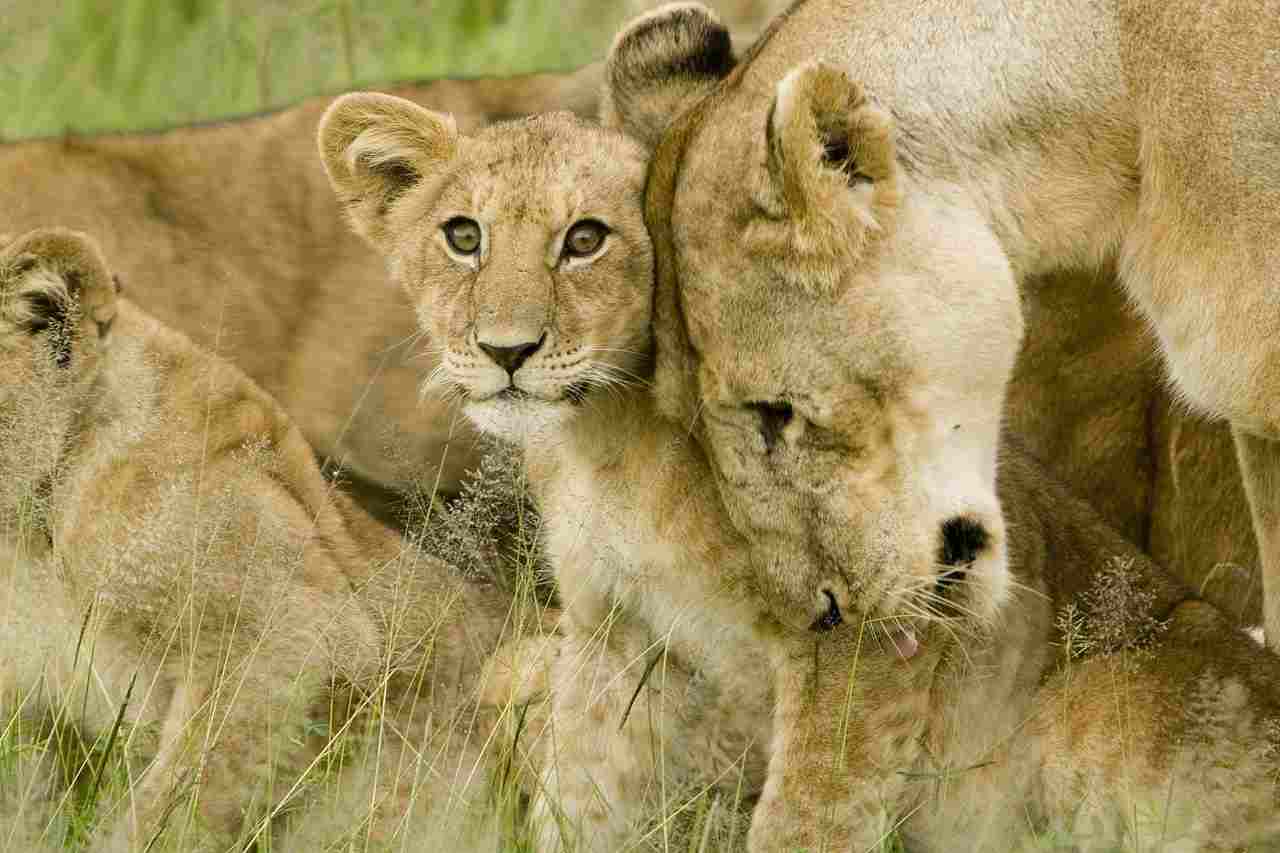
Komodo Dragon:
Limited parental care, consisting mainly of nest guarding.
Offspring are left to fend for themselves after hatching.
Lion:
Cooperative parental care within the pride, with females nursing and protecting cubs.
Older members of the pride contribute to teaching hunting and survival skills.
Comparison:
Lions demonstrate more extensive and cooperative parental behavior.
Ecological Implications:
Parental care influences the survival and development of offspring, impacting the overall pride dynamics and population.
20. Proximity to Human-Inhabited Areas
Komodo Dragon:
Typically found on remote Indonesian islands, with limited proximity to human settlements.
Lion:
Historical and current presence in regions near human settlements, particularly in Africa and parts of India.
Comparison:
Lions may have more interactions with humans due to shared habitats.
Ecological Implications:
Proximity to human-inhabited areas influences conservation efforts, potential conflicts, and human-wildlife interactions.
21. Behavior Toward Humans
Komodo Dragon:
Generally avoidant of humans but can be aggressive if threatened or provoked.
Lion:
Historically known for occasional attacks on humans, but typically avoid direct confrontation.
Comparison:
Both species may exhibit defensive behavior if they perceive humans as a threat.
Ecological Implications:
Human-wildlife interactions impact conservation strategies and the safety of both species and humans.
22. Danger Posed to Humans
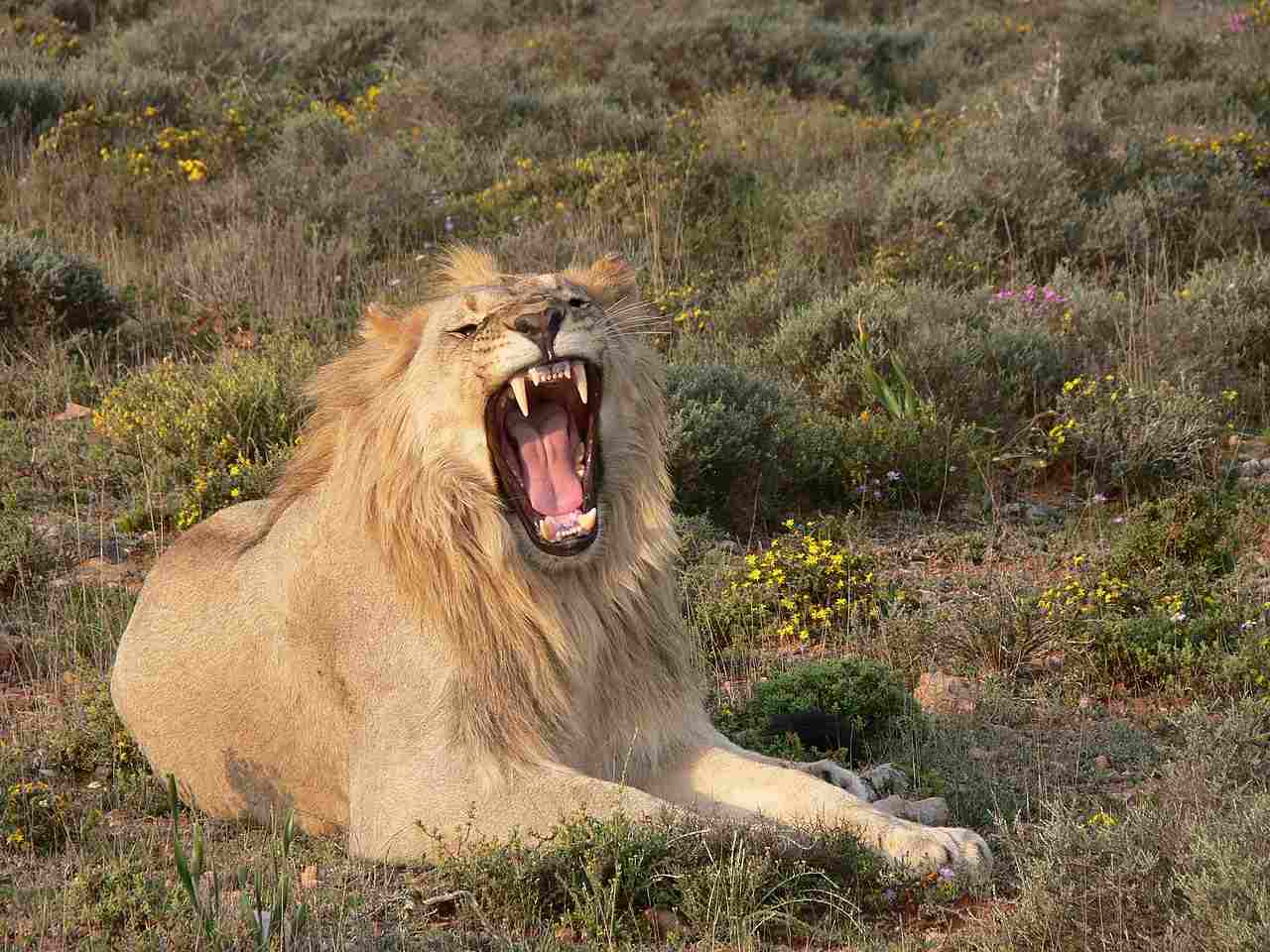
Komodo Dragon:
Can pose a threat if provoked, with the potential for a venomous bite causing harm.
Infrequent but documented cases of attacks on humans.
Lion:
Considered apex predators but generally avoid direct confrontation with humans.
Rare instances of attacks, often linked to specific circumstances or human encroachment.
Comparison:
Both species can be dangerous under certain conditions, but lion attacks on humans are relatively rare.
Ecological Implications:
Understanding the potential danger posed by these species is crucial for human safety and wildlife conservation efforts.
23. Associated Precautions
Komodo Dragon:
Caution urged when in close proximity; avoiding provocation and maintaining a safe distance is advised.
Lion:
Observing wildlife from a safe distance in their natural habitat is recommended.
Comparison:
Similar precautions regarding maintaining a safe distance are applicable for both species.
Ecological Implications:
Human behaviors and precautions influence the coexistence and conservation of these species.
24. Conservation Status
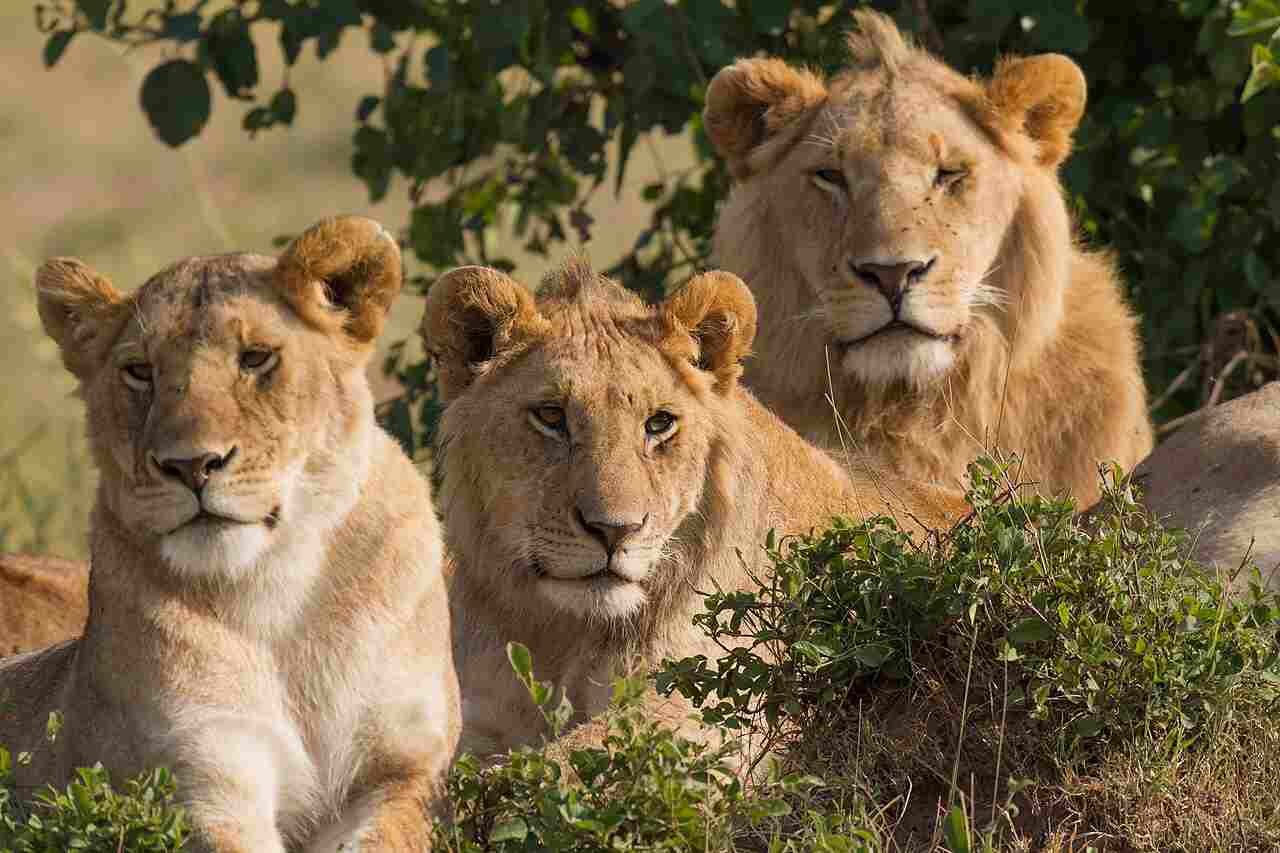
Komodo Dragon:
Listed as Vulnerable on the IUCN Red List due to habitat loss, human-wildlife conflict, and potential decline in prey.
Lion:
Listed as Vulnerable on the IUCN Red List, facing threats such as habitat loss, human-wildlife conflict, and poaching.
Comparison:
Both species face conservation challenges and are classified as Vulnerable.
Ecological Implications:
Conservation efforts are crucial to ensuring the survival of these species and maintaining biodiversity.
*Summary of Comparison
Taxonomy:
Komodo Dragon: Reptilia, Varanidae, Varanus komodoensis
Lion: Mammalia, Felidae, Panthera leo
Appearance:
Komodo Dragon: Armored scales, rugged texture
Lion: Short fur, tawny color, males with distinctive manes
Size:
Komodo Dragon: Up to 10 feet (males), 7.5 feet (females)
Lion: 8.5 to 10.8 feet (males), 7.5 to 9 feet (females)
Weight:
Komodo Dragon: 150-200 pounds (males), 150 pounds (females)
Lion: 330-500 pounds (males), 265-395 pounds (females)
Bite Force (PSI):
Komodo Dragon: 600-700 PSI
Lion: ~650 PSI
Physical Offensive Advantages:
Komodo Dragon: Venomous bite, sharp teeth
Lion: Powerful claws, sharp teeth, speed
Physical Defensive Advantages:
Komodo Dragon: Armored scales, agility
Lion: Group living, agility
Speed:
Komodo Dragon: ~20 km/h
Lion: Up to 50 km/h
Agility:
Komodo Dragon: Agile on land and in water
Lion: Remarkable agility, especially during pursuits
Senses:
Komodo Dragon: Excellent sense of smell, keen eyesight
Lion: Sharp eyesight, acute sense of hearing
Overall Physical Capacity:
Komodo Dragon: Robust build, powerful limbs
Lion: Versatile with speed, strength, and endurance
Habitat Preference(s) and Geographic Region:
Komodo Dragon: Indonesian islands, savannas, forests, coastal regions
Lion: Grasslands, savannas, open woodlands in Africa, Gir Forest in India
Tracks:
Komodo Dragon: Clawed tracks near water
Lion: Paw prints with distinctive toe prints and claw marks
Lifespan:
Komodo Dragon: Up to 20 years
Lion: 10-14 years
Mode of Feeding:
Komodo Dragon: Carnivorous, venomous bite
Lion: Carnivorous, cooperative hunting
Intelligence:
Komodo Dragon: Problem-solving abilities
Lion: Complex social structures, cooperative hunting
Social Behavior:
Komodo Dragon: Generally solitary, aggressive territorial behavior
Lion: Highly social, cooperative hunting, complex hierarchy
Mode of Reproduction:
Komodo Dragon: Oviparous, limited parental care
Lion: Viviparous, cooperative parental care
Parental Behavior:
Komodo Dragon: Limited parental care, nest guarding
Lion: Cooperative parental care within the pride
Proximity to Human-Inhabited Areas:
Komodo Dragon: Remote Indonesian islands
Lion: Historical and current presence near human settlements
Behavior Toward Humans:
Komodo Dragon: Generally avoidant, aggressive if threatened
Lion: Generally avoid direct confrontation, rare attacks
Danger Posed to Humans:
Both species can be dangerous under certain conditions.
Associated Precautions:
Caution urged when in close proximity, maintaining a safe distance recommended.
Conservation Status:
Both species are listed as Vulnerable on the IUCN Red List.
Conclusion
I. Similarities
Both species are apex predators in their respective ecosystems.
Vulnerable conservation statuses highlight the need for protective measures.
II. Differences
Lions exhibit complex social structures and cooperative hunting, while Komodo dragons are predominantly solitary.
Reproductive strategies differ, with lions displaying cooperative parental care and Komodo dragons providing limited nest guarding.
Komodo dragons have a longer lifespan, while lions demonstrate higher speed and agility.
Lions may have more interactions with humans due to historical and current proximity.

